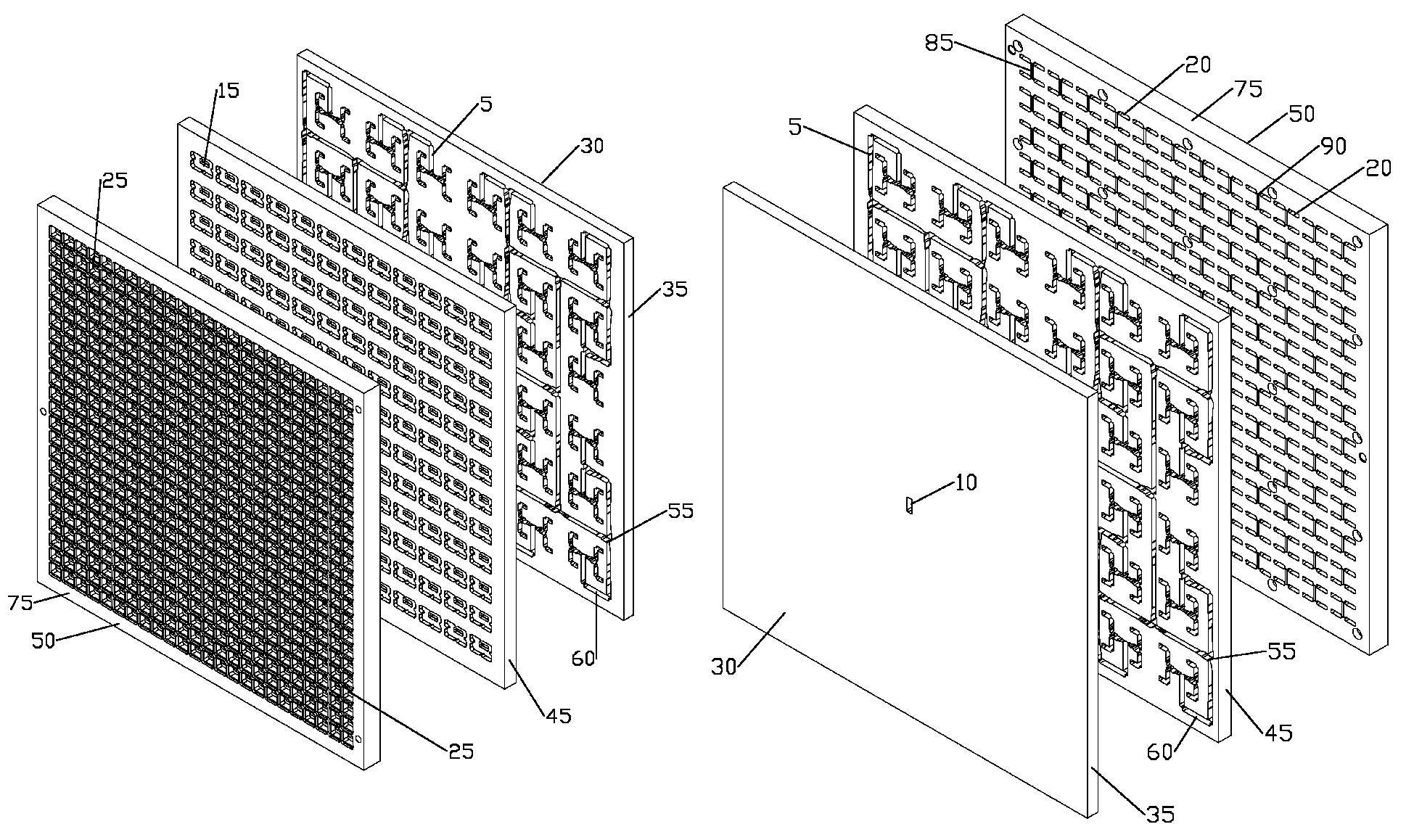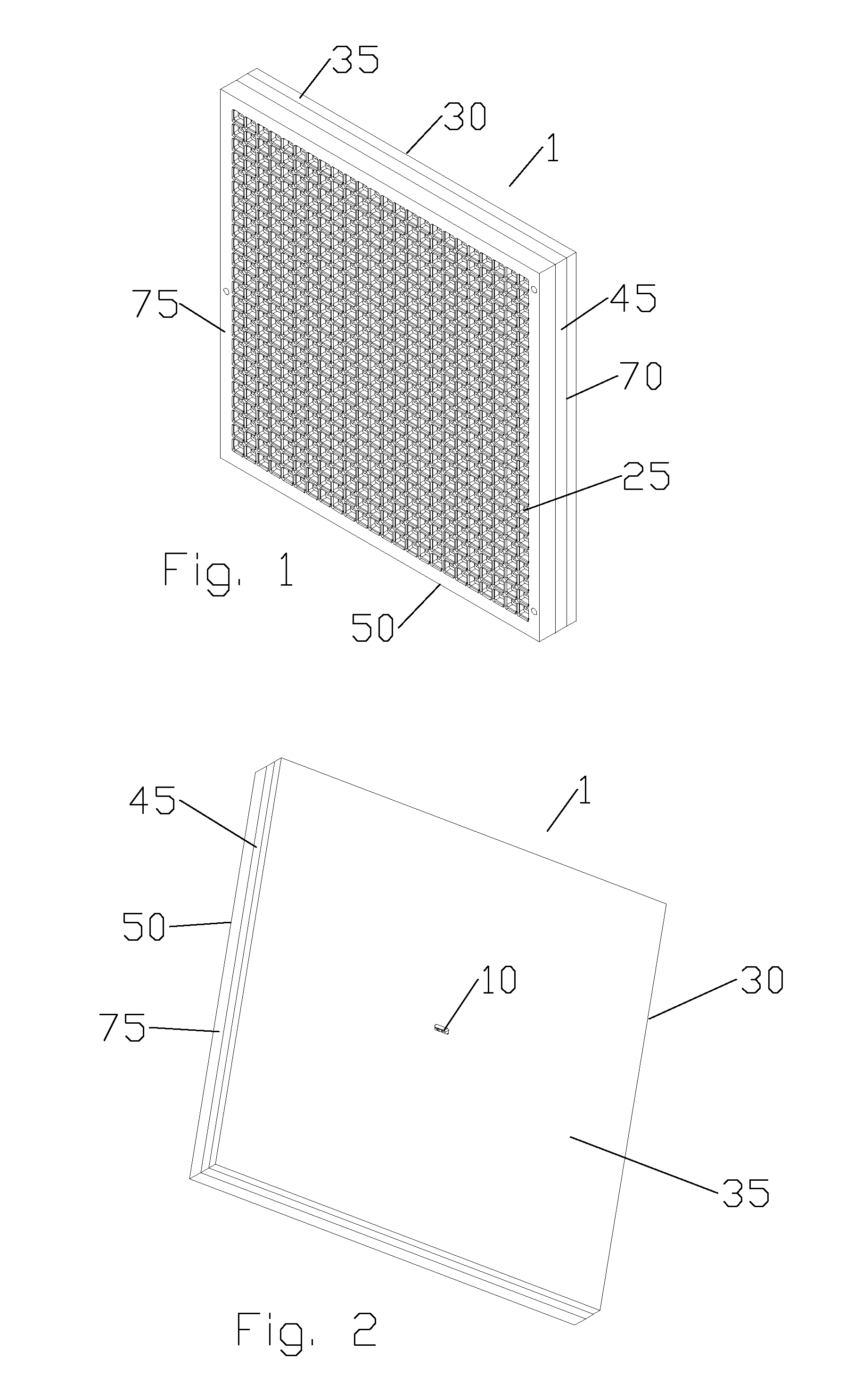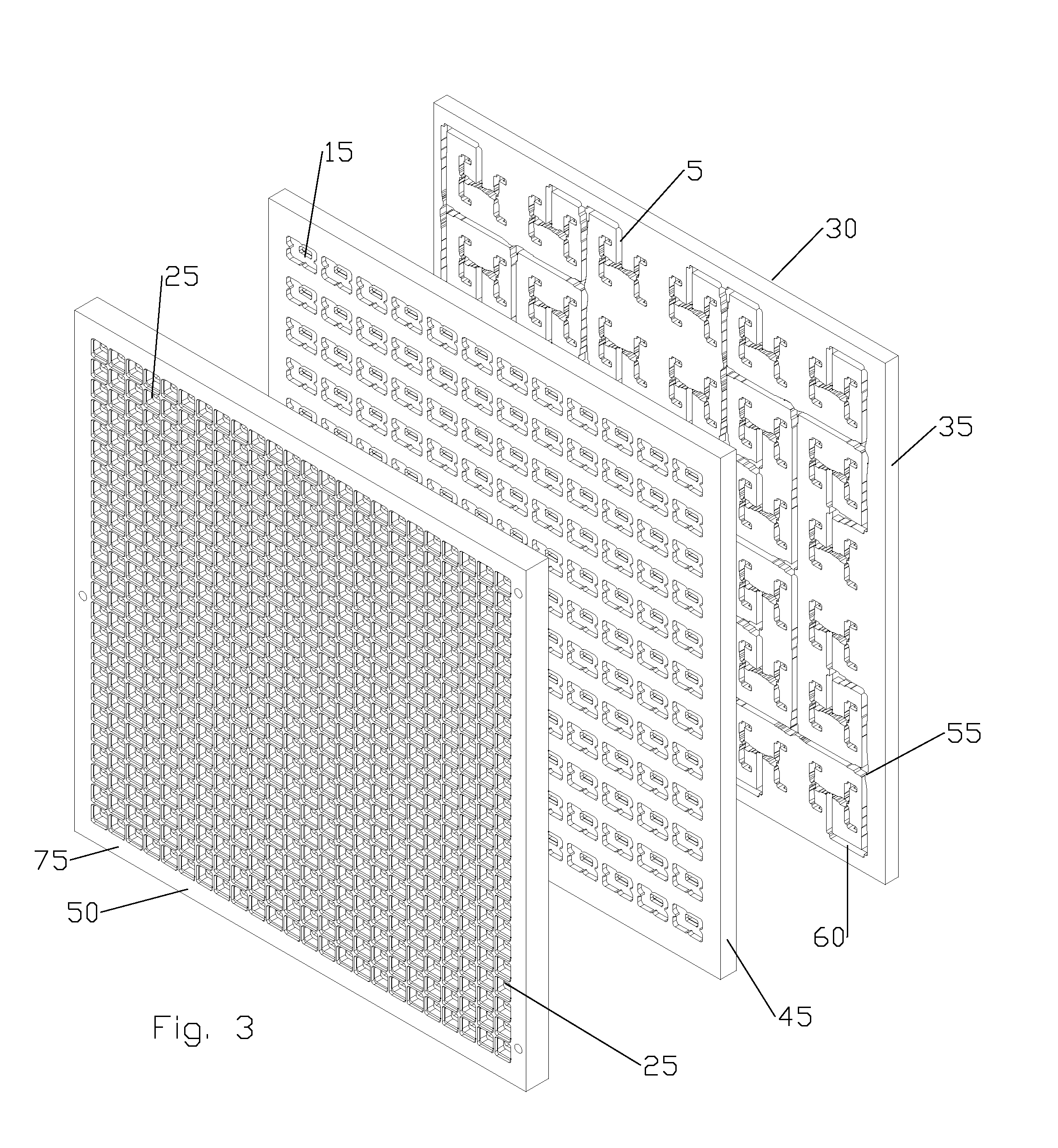Flat panel array antenna
a flat panel array and antenna technology, applied in the field of microwave antennas, can solve the problems of increasing overall costs, preventing simultaneous efficient alignment of the link for both channels, and resonant configurations typically cannot achieve the requisite electromagnetic characteristics
- Summary
- Abstract
- Description
- Claims
- Application Information
AI Technical Summary
Benefits of technology
Problems solved by technology
Method used
Image
Examples
Embodiment Construction
[0038]The inventors have developed a flat panel antenna utilizing a corporate waveguide network and cavity couplers provided in stacked layers. The low loss 4-way coupling of each cavity coupler significantly simplifies the requirements of the corporate waveguide network, enabling higher feed horn density for improved electrical performance. The layered configuration enables cost efficient precision mass production.
[0039]As shown in FIGS. 1-8, a first embodiment of a flat panel array antenna 1 is formed from several layers each with surface contours and apertures combining to form a feed horn array 4 and RF path comprising a series of enclosed coupling cavities and interconnecting waveguides when the layers are stacked upon one another.
[0040]The RF path comprises a waveguide network 5 coupling an input feed 10 to a plurality of primary coupling cavities 15. Each of the primary coupling cavities 15 is provided with four output ports 20, each of the output ports 20 coupled to a horn r...
PUM
| Property | Measurement | Unit |
|---|---|---|
| angle | aaaaa | aaaaa |
| operating frequencies | aaaaa | aaaaa |
| rotation angle | aaaaa | aaaaa |
Abstract
Description
Claims
Application Information
 Login to View More
Login to View More - R&D
- Intellectual Property
- Life Sciences
- Materials
- Tech Scout
- Unparalleled Data Quality
- Higher Quality Content
- 60% Fewer Hallucinations
Browse by: Latest US Patents, China's latest patents, Technical Efficacy Thesaurus, Application Domain, Technology Topic, Popular Technical Reports.
© 2025 PatSnap. All rights reserved.Legal|Privacy policy|Modern Slavery Act Transparency Statement|Sitemap|About US| Contact US: help@patsnap.com



